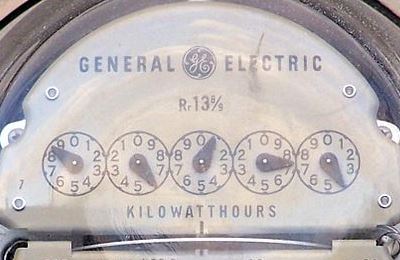General Electric Co. (NYSE: GE) was maintained as Buy with a $29 price target at Bank of America Merrill Lynch, with the firm saying that the fundamentals are better than sentiment would suggest. Still, the firm cut its 2014 earnings from $1.69 to $1.67 per share as higher industrial profit growth is more than offset by higher corporate expense forecast.
GE seems a bit lost after its second-quarter earnings report. In our GE earnings preview, we warned that there were four issues that may convolute how everyone interprets earnings. Now it seems that the real issue is perhaps that this transitionary period is creating a scenario in which investors simply are unsure of how to value the GE of 2015 and beyond.
GE made it quite clear to us and to Wall Street analysts what the ultimate goal is: to be valued as an industrial conglomerate rather than a conglomerate with earnings too dependent on consumer finance efforts.
As far as what this means, GE is valued at 14.2 times 2015 expected earnings, versus 14.8 times for United Tech, more than 17 times for 3M and almost 16 times for Honeywell. The long and short of the matter is that this means the GE of tomorrow could be worth 10% more, based solely on what the market might value the company as. Still, something short of an identity crisis is taking place.
ALSO READ: 12 Analyst Stocks Under $10 With Massive Upside Potential
GE’s approximately $17 billion Alstom buyout is adding in new exposure in Europe. GE is spinning out the Synchrony Financial consumer finance unit via an IPO to raise more than $3.1 billion in the initial sale. Now there is word that GE is again considering a spin-out or outright sale of the GE appliances unit.
Another ongoing issue is that it has been discussed outside of GE that Jeff Immelt could be retiring earlier than normal, something that could cause the unit heads who were not chosen for the CEO role to jump ship for other companies — which was the case after then-CEO and chairman Jack Welch and his board went with Jeff Immelt.
Merrill Lynch was positive on GE, maintaining its Buy rating and $30 stock price target. Still, it confirmed our fears: investor sentiment understates long-term trends and the reaction was indicative of how low the sentiment is in GE. The team even warned that it could take more good quarters from GE to improve investors’ conviction in the stock. That means that the identity crisis could continue. Its highlighted fundamentals now moving ahead of the negative sentiment are as follows:
- GE Industrial earnings are breaking out of a decade-long range.
- GE is back to being an industrial name with industrial earnings contribution going back
to the percentage levels not seen since the early 1990s. - GE Capital is overcapitalized and is a likely long-term source of cash with near term transaction catalysts.
The day before earnings, GE was trading at $26.61. It fell to $26.46 on the earnings report itself (Friday) and then fell even more on Monday, down 1.8% to $25.98.
GE’s consensus analyst price target is still up at $29.33. What is amazing about the GE reaction to earnings, ahead of it and after it, is that it took place with almost no inflection point analyst calls. It is as if analysts are facing the same dilemma about how to evaluate and value the GE of 2015 and 2016 as well.
ALSO READ: Deutsche Bank Raises Price Targets on Top Biotech and Health Care Stocks
GE is simply in a grand period of change. Its change will likely be clear once the dust settles, but until then there are many moving parts. GE’s total 2013 revenue was $146 billion, but Synchrony revenue was almost $11.3 billion of that (before “other” and before retailer share arrangements). More than $8 billion of the revenue was tied to appliances. Add in whatever you think GE will get from Alstom in Europe, and GE’s revenue mix is in a state of change.
The dust will settle here, and GE will likely look great at that time. For now, GE may simply be in too much of a state of change for many investors to embrace without backing up first.
It’s Your Money, Your Future—Own It (sponsor)
Retirement can be daunting, but it doesn’t need to be.
Imagine having an expert in your corner to help you with your financial goals. Someone to help you determine if you’re ahead, behind, or right on track. With SmartAsset, that’s not just a dream—it’s reality. This free tool connects you with pre-screened financial advisors who work in your best interests. It’s quick, it’s easy, so take the leap today and start planning smarter!
Don’t waste another minute; get started right here and help your retirement dreams become a retirement reality.
Thank you for reading! Have some feedback for us?
Contact the 24/7 Wall St. editorial team.




